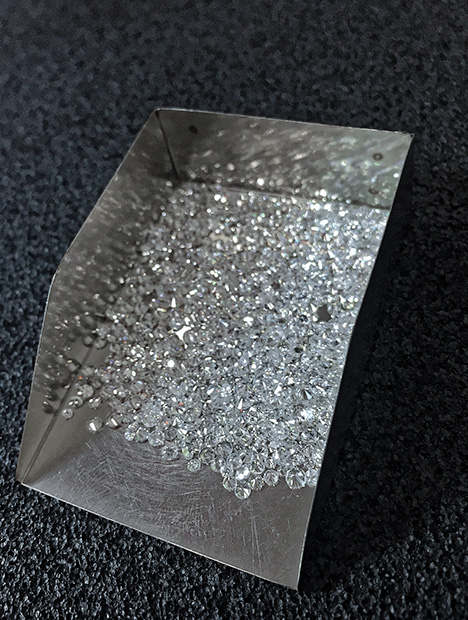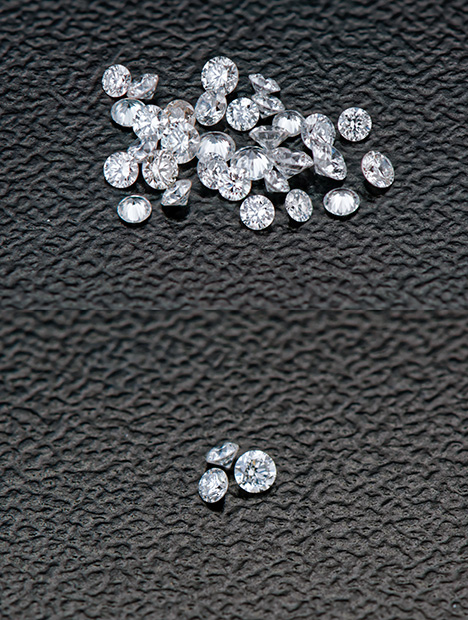Screening of HPHT Synthetic Melee With Natural Diamonds

Significant amounts of melee-size synthetic diamonds produced by both HPHT and CVD technologies are manufactured for the jewelry industry. The “salting” of natural diamond melee parcels with HPHT-grown synthetic melee is seen more frequently in the trade today. This presents a threat to the integrity of diamond dealers and manufacturers who might unknowingly sell or use synthetic diamonds and represent them as natural. In response, GIA has introduced a melee analysis and screening service aimed at helping the trade combat this problem. The screening is rapid and relatively inexpensive. This service can screen large quantities of diamond melee and separate natural diamond from synthetic material (both HPHT and CVD grown), natural HPHT-processed diamond, and diamond simulants such as cubic zirconia or moissanite. In addition, a color grade within the D–Z range can be assigned to each diamond.
In August 2016, a group of 3,005 melee with a total weight of 70.56 carats (figure 1) was submitted to GIA’s New York lab for screening service. Initial testing using our fully automatic screening device, which is based on spectroscopic methods, passed 2,969 (98.7%) of them as natural diamond. Of the remaining 36, 12 were subsequently identified as natural material by methods including photoluminescence (PL) spectroscopy, and only 24 were referred for further testing to confirm their identity as natural, treated, or synthetic diamond.
Additional testing with Fourier-transform infrared (FTIR) absorption spectroscopy, Raman PL spectroscopy, and fluorescence imaging techniques identified 21 of these 24 melee as natural diamond. This analysis also confirmed that three (0.1%) of the melee in the parcel were HPHT-grown synthetic diamonds (figure 2).

This highlights the practice of “salting” parcels of natural diamond melee with a small percentage of synthetic diamond melee, and the importance of advanced testing to identify them.



